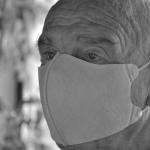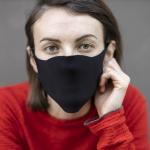The media took an optimistic assessment of the current situation, but new cases remain far worse than when the pandemic began in March of 2020 or at the subsequent low point in June.
COVID-19 mortality
The basic COVID-19 disease metrics are cases (positive tests, interpreted as infections) and deaths (death certificates). The headlines on cable news are usually national totals: 30+ million cases and 560,000+ deaths.
While it is evident that nursing home residents [1] are both susceptible to COVID-19 and suffer higher rates of mortality, it has been unclear what exactly the underlying risk factors are. Certainly, co-morbid conditions, which seem to
Face masks are an important way to limit new COVID-19 infections, but since mask wearing has become politicized and the subject of derision in some areas, we questioned whether additional personal characteristics might be important.
The graph shows "averaged" statewide averages of cumulative deaths per million residents by region. Three features stand out:
Like any screening test, the unreliability of COVID-19 antibodies tests, as measured by the number of false positives increases as the incidence of the disease within the screening population decreases.
Stanford researchers tested 3330 people in one county in California, Santa Clara, that at the time of testing had the largest number of confirmed cases in the state.
Let’s begin with the data. The researchers used COVID-19 related deaths by county as compiled by Johns Hopkins.
Taken from the UK's Intensive Care National Audit & Research Centre - a table from their report, as of April 4th showing the COVID











